It is only shocking when it happens in certain places
On state violence and an invitation to notice the patterns
You may have already heard about this particular juxtaposition. It’s a cliché place to start, but we have to start somewhere, so why not make it a flipped car.
Last weekend, a majority White crowd of University of Wisconsin-Madison undergrads and assorted hangers-on gathered for the annual Mifflin Block Party. Though it has its origins in Madison’s 1960s protest movement, its radical roots disappeared years ago. For the past few decades, it’s been your garden variety party school rager. Kids dance on porches and in the street. They drink too much and make a lot of mistakes. Sometimes they flip cars. Sometimes they get in fights, sending each other to the hospital. Sometimes professional hockey stars show up, assault women and shout anti-semitic slurs. It’s a real mess.
There are police at Mifflin. They do issue citations, mostly for underage drinking. Many years, including this year, cops get injured in the fray, something that can happen when you’re in a dense crowd full of unruly drunk kids. They never talk about being afraid for their safety, though. Cops were present when that car was flipped, by the way. Here they are, hanging around in flourescent vests.
Again, you know where this is going. But still. Sometimes there’s value in re-telling a story whose ending is already obvious.
Here are a series of pictures from the student-led Palestinian solidarity encampment on Madison’s Library Mall. They were taken yesterday, May 1st, by Nicholas Sinn, one of the many talented student journalists from UW’s Daily Cardinal who’ve been covering the occupation.
In that last image, the individuals being pushed to the ground by riot shield wielding patrolmen are University of Wisconsin professors. They had arrived at the protests to protect their students, none of whom were drunk or flipping cars, some of whom were literally asleep when the shields and clubs descended.
The man falling to the ground is Dr. Samar Alatout, a Professor in the Community and Environmental Sociology department. Here’s another shot of Dr. Alatout, this one from another Daily Cardinal photojournalist, Drake White-Bergey.
Let’s go back to Mifflin again. I highly encourage you to watch this interview between Madison’s Channel 3000 News and the MPD’s central district captain, Mike Hanson. In it, Hanson reflects on why it’s so important to have the police presence at the event (where 10,000 young people gather regularly to binge drink and, in many cases, break laws) be as light-handed as possible. Here are some illustrative quotes:
"We know that we're not going to arrest our way out of everything here.”
"95% of the people going to this event are here for a great time, to enjoy themselves and let off steam."
"The day usually starts out very collegial between the officers working actually in the field and the people that are attending the Mifflin Street Block Party," Hanson said. "We try and assess the crowd early by engaging with them. That's called the Madison Method for how we engage with any crowd or protest."
The “Madison Method” (or Madison Model) refers to a particular set of reforms governing how the Madison Police Department should engage the community— both generally and especially in crowd control situations. Its origins are in an earnest 1970s-era attempt by then-Madison police chief David C. Couper to reform the department after its heavy-handed responses to Vietnam era protests, particularly the first-ever Mifflin Block Party. Couper’s dream was that, by training cops in de-escalation, dressing them in blazers and shorts, and encouraging beat cops to build relationships with their neighbors, he could transform police officers, into “social workers in blue.”
To be clear, I don’t think anybody should be subject to state violence, including Mifflin miscreants. While I’m personally not a fan of college kids flipping cars or NHL stars choking women and shouting anti-semitic slurs, I don’t believe they should have their heads bashed by riot cops or their lungs filled with tear gas as punishment for their crimes. So if the long tail of Couper’s reforms lowered the overall level of violence at an unsustainably dangerous event, that beats the alternative.
As you’d expect, the utopian dream of the Madison Model was always built to fail— it relied on the voluntary good will of police officers who were still armed with deadly weapons in a city, state and country shaped by structural oppression. In practice, the method never transformed law enforcement into that city into non-violent social workers, particularly for residents of Madison’s low income and Black neighborhoods. As for public gatherings, there’s a clear trend of when the “Model” is deployed and when it isn’t.
Here’s another picture of cops enjoying their mutual “right of passage” with students at Mifflin.
And here’s a picture from this past winter, outside of Madison’s basketball arena. You’ll notice the undergraduates camping out in order to get the best possible tickets for a Badger basketball game. In this case, the Madison Method dictated a light enough touch that police didn’t even show up, in spite of the fact that (as has been noted many times this past week by UW administration), camping on state campus property is against the law.
And here is a different application of the Madison Method, from the 2020 protests in the aftermath of George Floyd’s murder.
The point here is not just to reiterate the easy gotcha that police treat White partiers or sports fans differently than they treat protest movements led by people of color. We already know that’s true, if not from a lifetime of anecdotes then from the way we all internalize the logic of the system in which we live.
The larger point, though, is to notice when we are surprised to see state violence, when it is news worthy, when it attracts our attention.
It would have been a surprise if riot cops had descended on Mifflin this year and started busting heads. It would have been even more of a surprise had they opened live rounds on the crowd. We don’t expect that punishment for White college kids “looking to blow off some steam.”
But it goes deeper than that.
We don’t expect state violence on or around college campuses in general, actually. Or at least we don’t until the college kids gather in order to challenge the logic of the system rather than reinforcing it. College kids are supposed to be dumb and drunk. They aren’t supposed to ask why imperial wars are being fought in our name, why some people are bombed or shot in order to protect other people’s ostensible safety.
And so, we are slightly more surprised when we see students and faculty being assaulted by cops, but only a little bit. Again, we have seen this before. It’s been the same story since 1968. Students can do anything they want, except ask the questions they’re not supposed to ask.
There’s an opportunity in that noticing, one that we might miss if the only lesson is a quick-fire eye roll at how the frat boys got to party and the protestors got roughed up.
We know that cops with guns assault people, that cops with guns kill people. Last year, American cops killed more civilians than any year previously.
We expect cops to be violent. We just don’t expect it to happen on college campuses.
So there’s the first invitation. To notice. To ask yourself: Where are we shocked to see police violence and where are we numb to it? What communities are allowed to live with the story that armed cops keep us safe and what communities are forced to bear the brunt of that myth’s limits?
If we don’t think college kids should be assaulted by government forces, either for protesting or for being dumb and drunk, then who do we believe should be? And why do we believe that?
That’s the first layer of noticing.
The second layer, of course, is the one at the heart of this protest movement, the one whose core logic is that we, as Americans, will pay more attention to headlines from Columbia University than we will to headlines from Rafah.
Where is violence such a tragedy that we know all the victims’ names and stories, and where do we accept that it will be measured only in statistics?
Whose deaths are treated as lamentable and whose deaths are treated as inevitable?
Whose dreams are cut short so that the rest of us are allowed to live in our own dreamworld of innocence and disconnection?
The immediate invitation, the one echoing on U.S. college campuses, is for a permanent ceasefire to the war on Gaza. It’s a profound and necessary invitation, but like all moments where we are reminded of the violence and irrationality of this entire system, it is only the first step.
It should be shocking to see state violence on a college campus, not because campuses are magical bubbles where the world’s sins disappear, but because it should be shocking to see state violence anywhere. We all deserve to be safe.
Everywhere.
On the quad.
On a street corner in a neighborhood on the other side town.
And most of all in the shadow of bombed out universities and disappeared hospitals half a world away.
End notes
-The U.S. Campaign for Palestinian Rights continues to be my go-to source for action alerts on Palestine, but I am also following the two campus protests closest to me, at UW-Madison and UW-Milwaukee, to learn the best ways to support them. If you have a campus protest near you, I suggest doing the same.
-For reasons that I hope are apparent, I wanted to write one more public essay this week. My apologies to paid subscribers for not doing our weekly community discussion. As you know, I love them so much, and I know many of you do too. If you’re a paid subscriber and missing the community, I’d encourage you to check out the Discord (email me if you need another invitation), where the discussions have been rich and lively all week long.
-I already did the whole laundry list of announcements in my previous post this week, but quick updates: you’re still invited to buy the book (and doing so helps out so much, thank you); you’re also still invited to one of the upcoming Barnraisers trainings; I will have more to say about the event I got to take part of in Lynchburg earlier this week because it was incredible; and, if you missed it, Sarah Keyeski, the candidate I wrote about last week, was profiled on The New York Times Election podcast today! Team Keyeski let’s goooo!

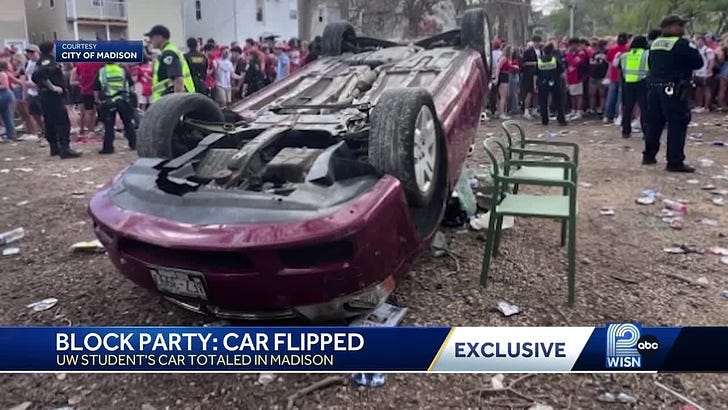


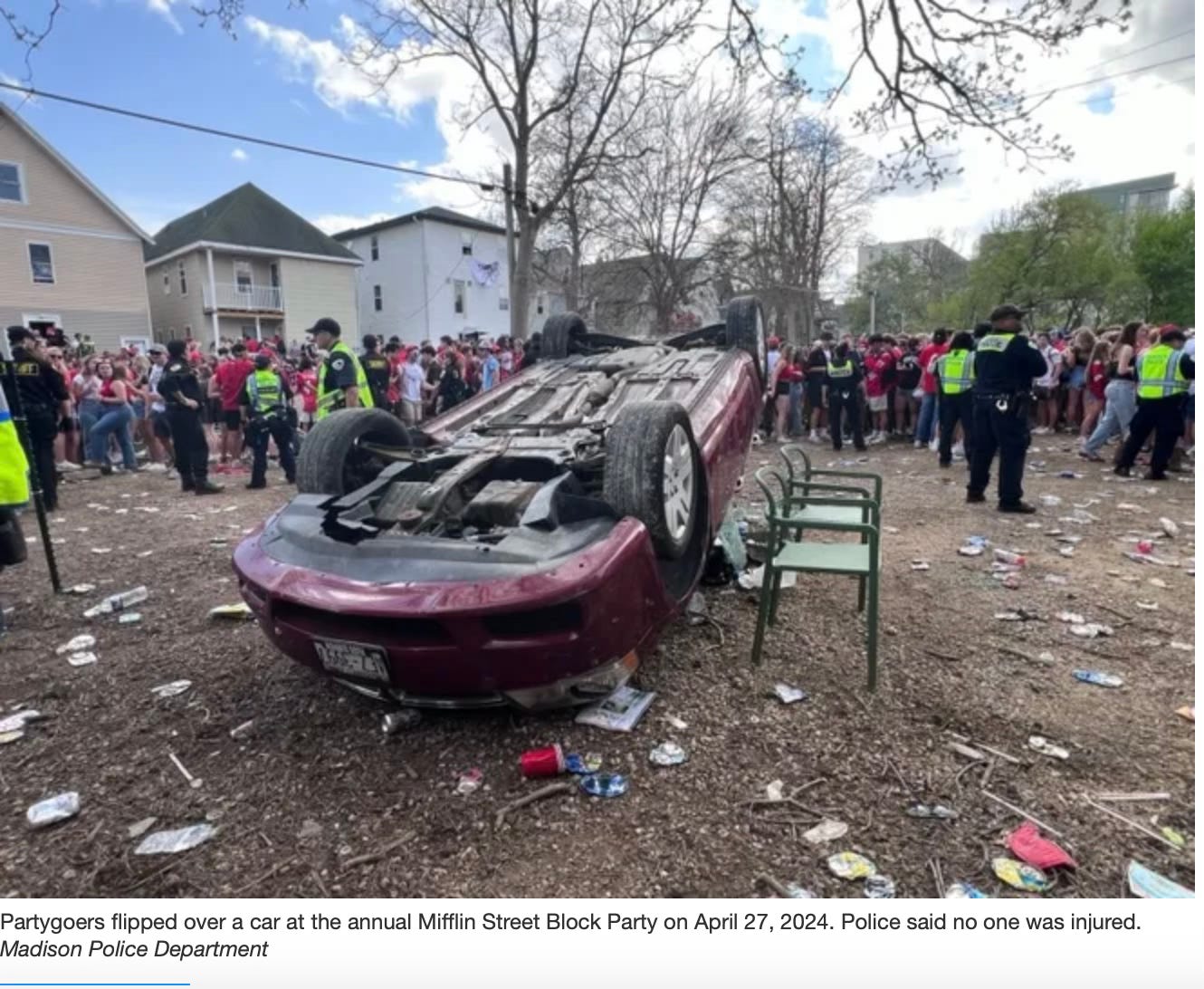
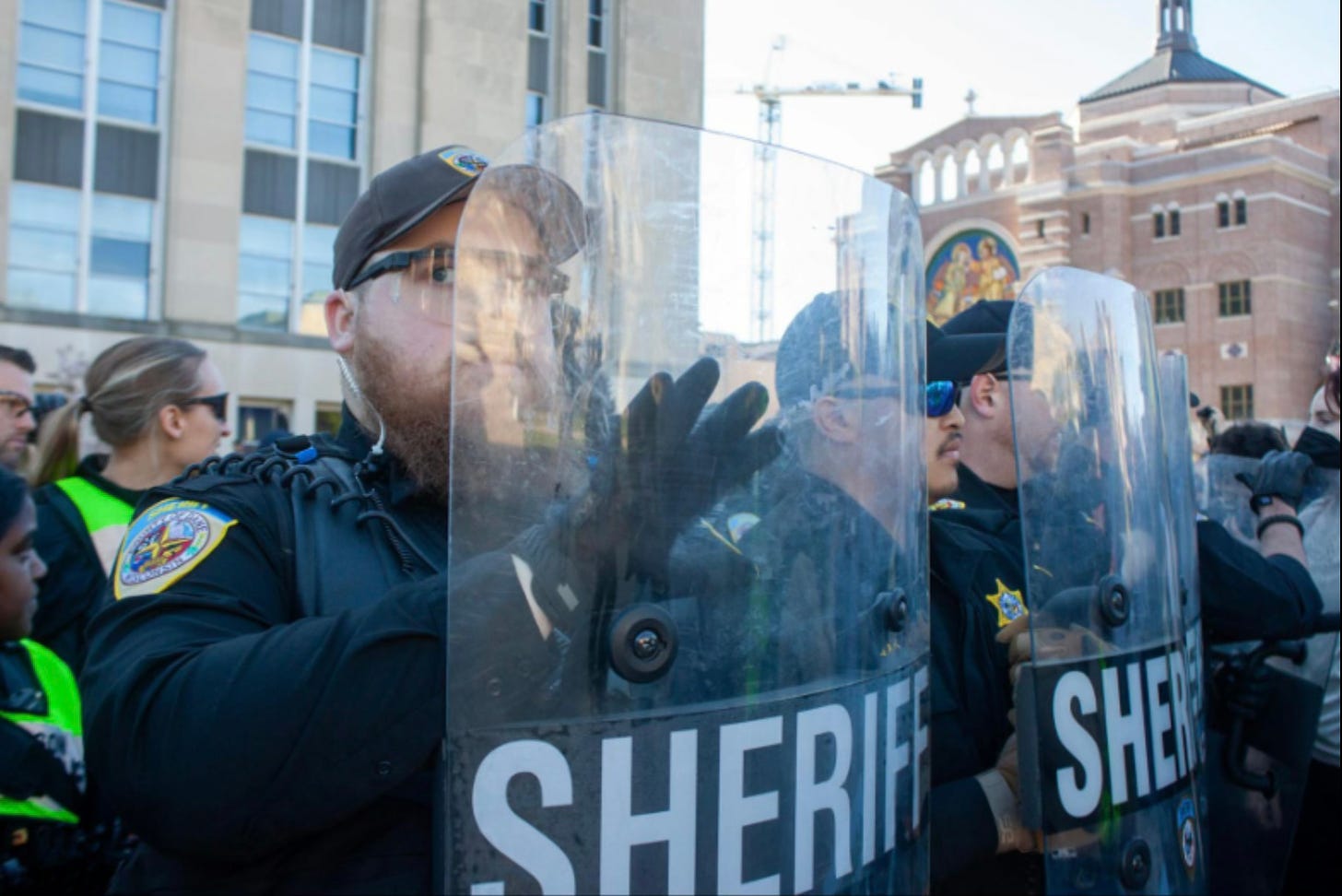
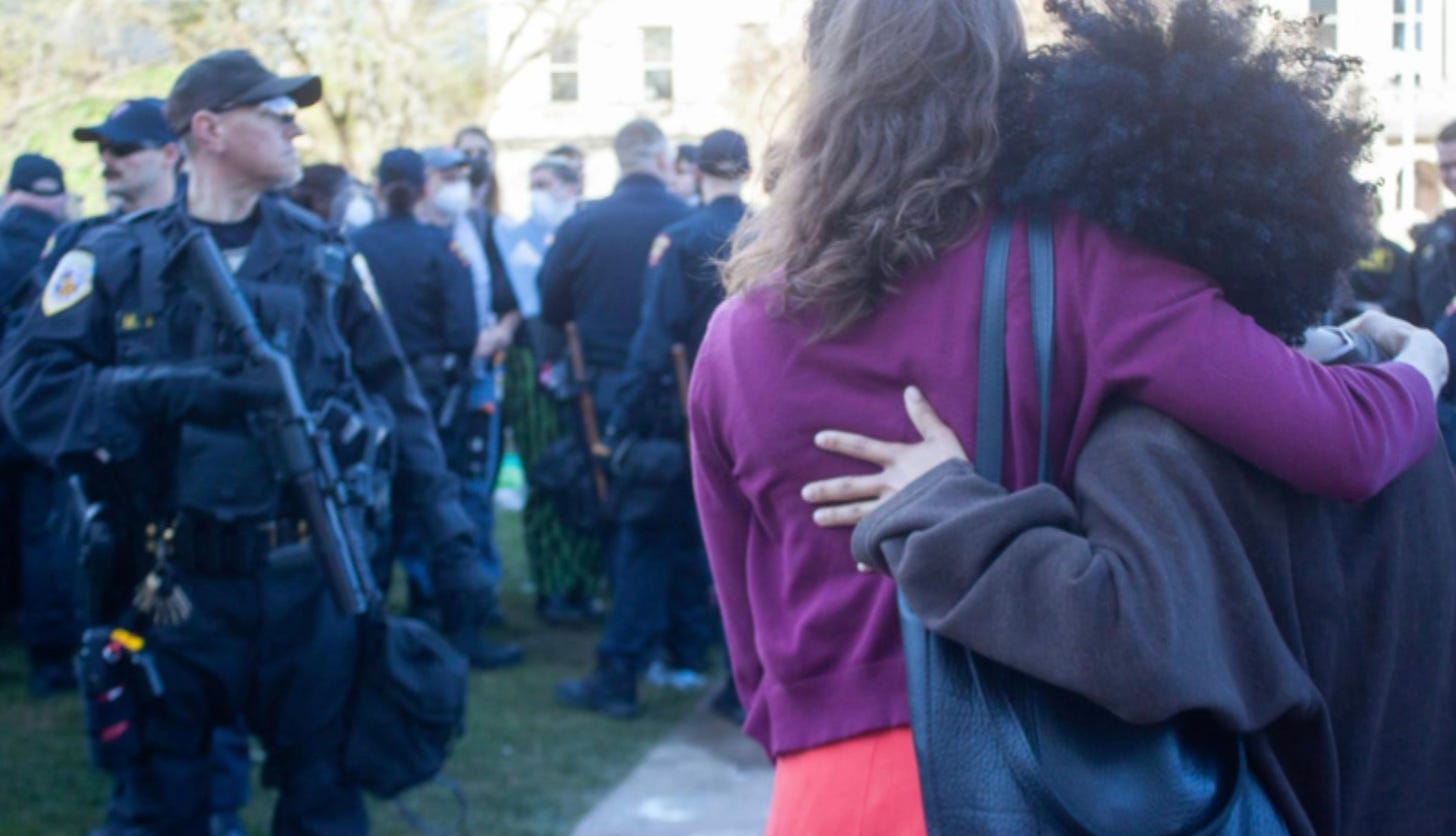
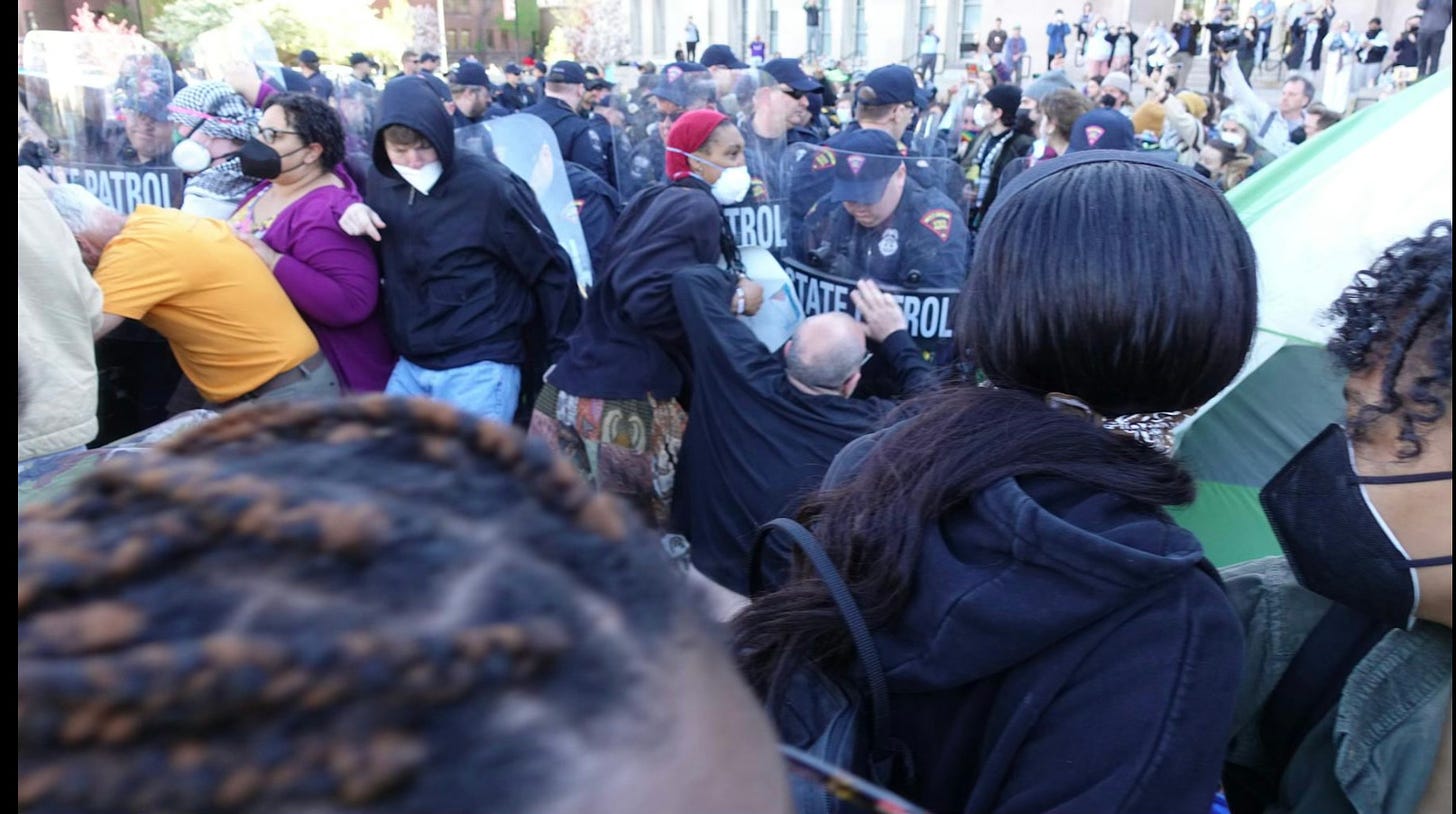
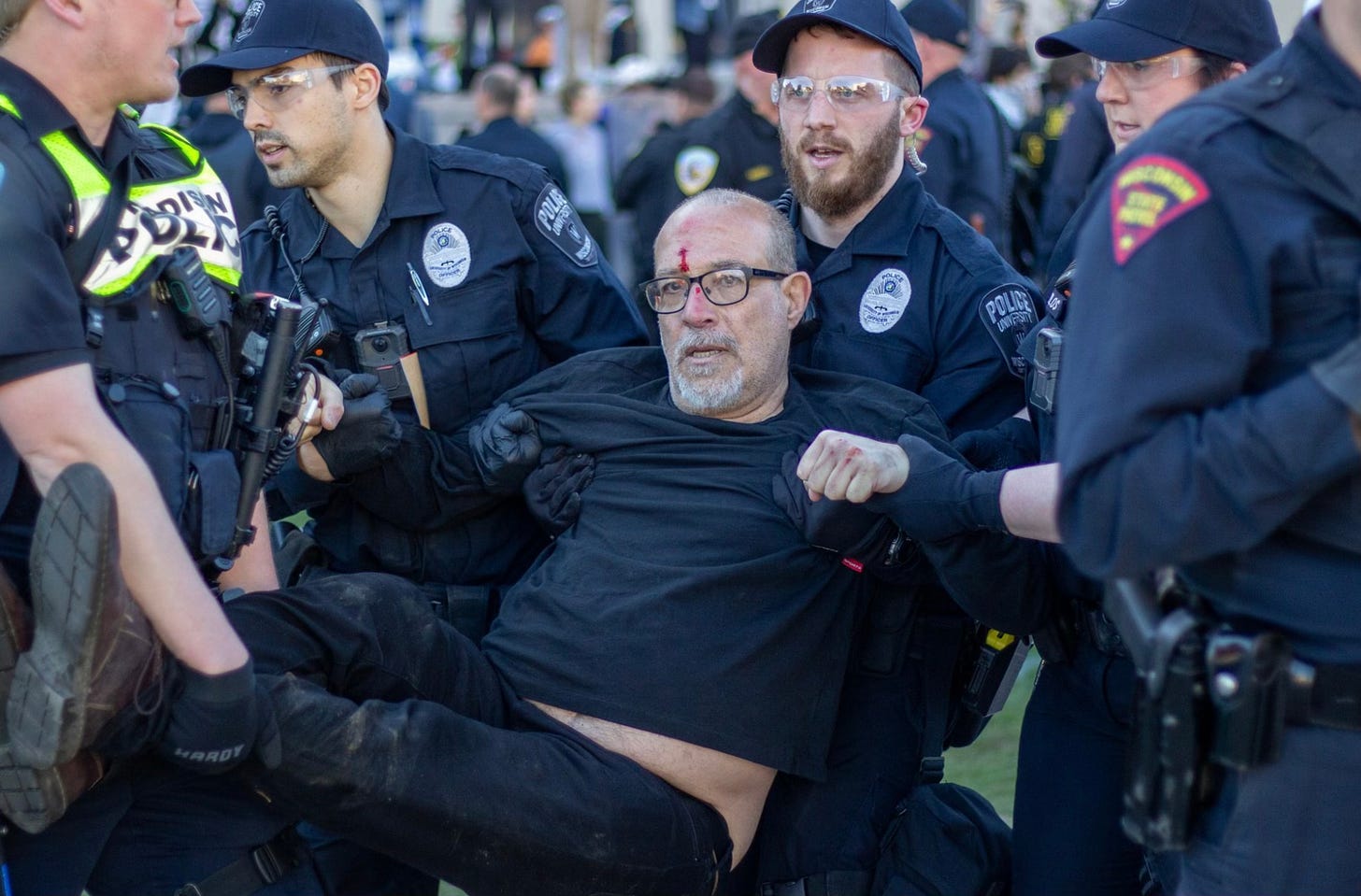
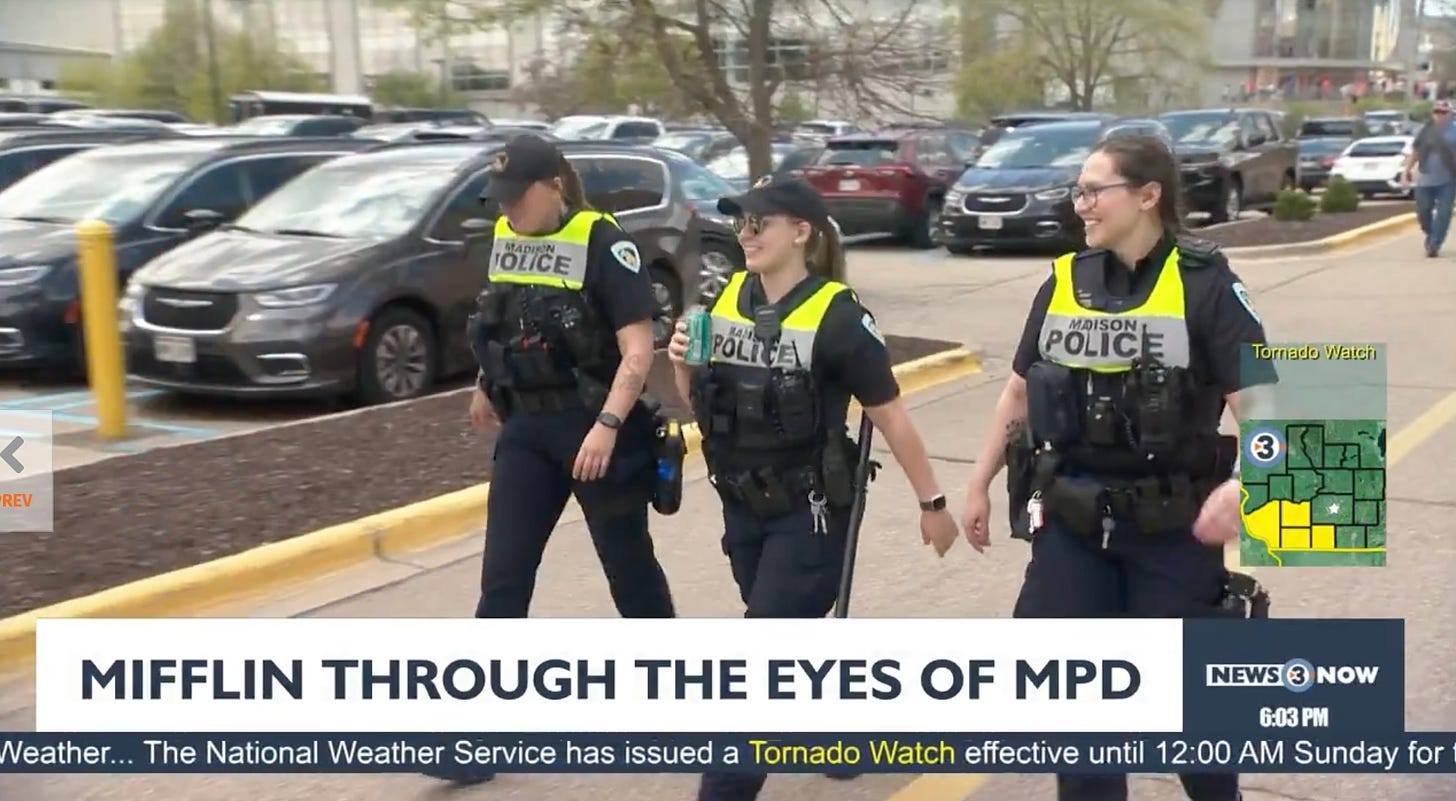
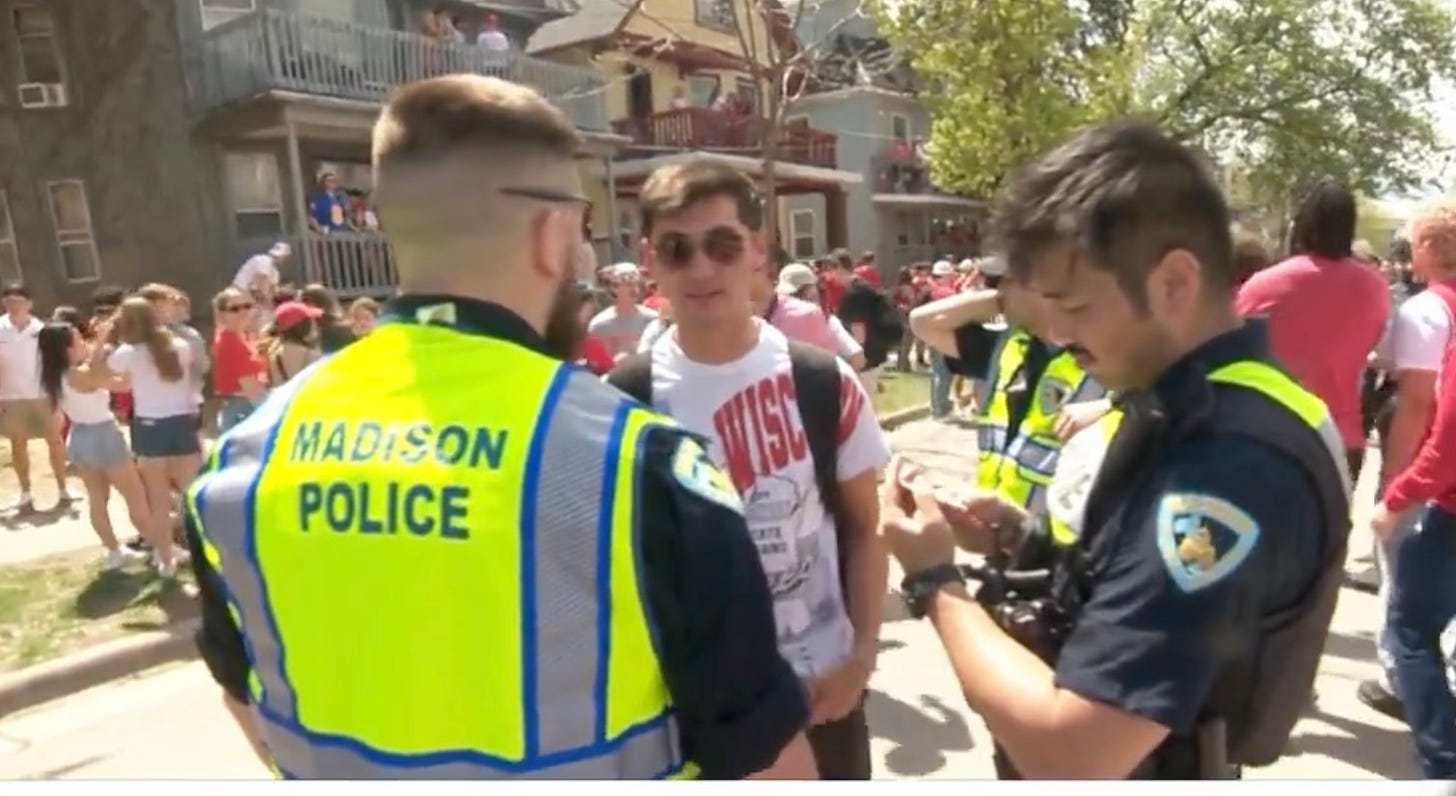
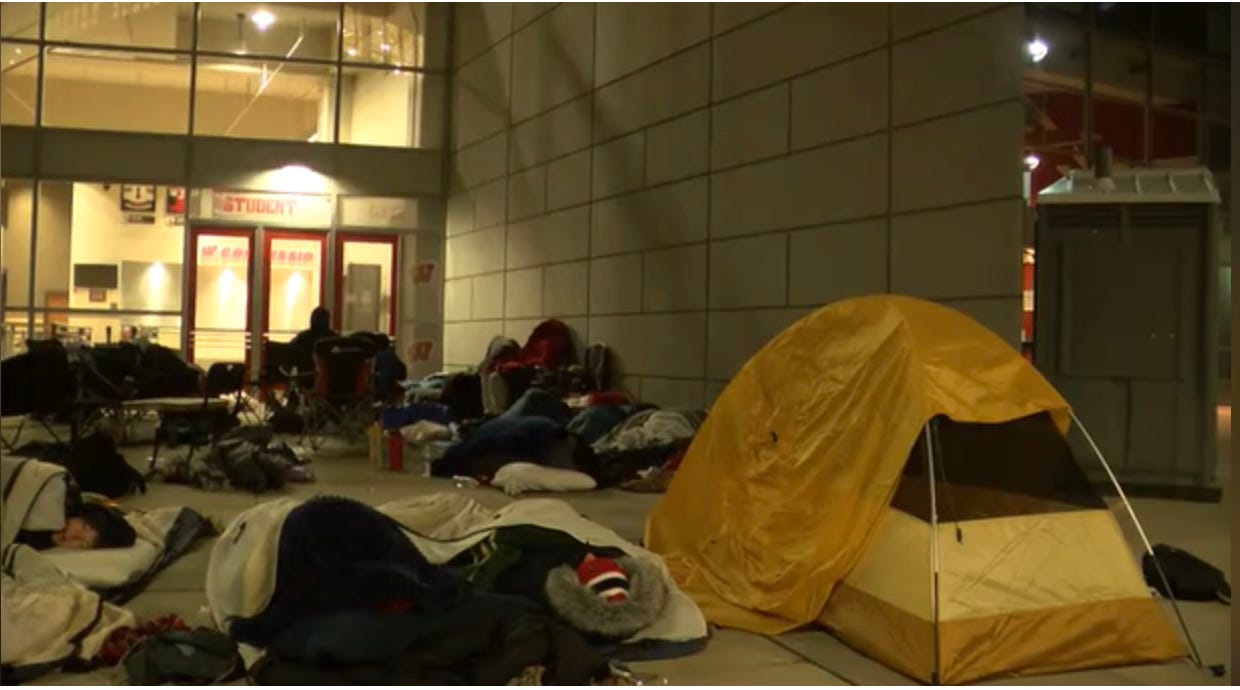
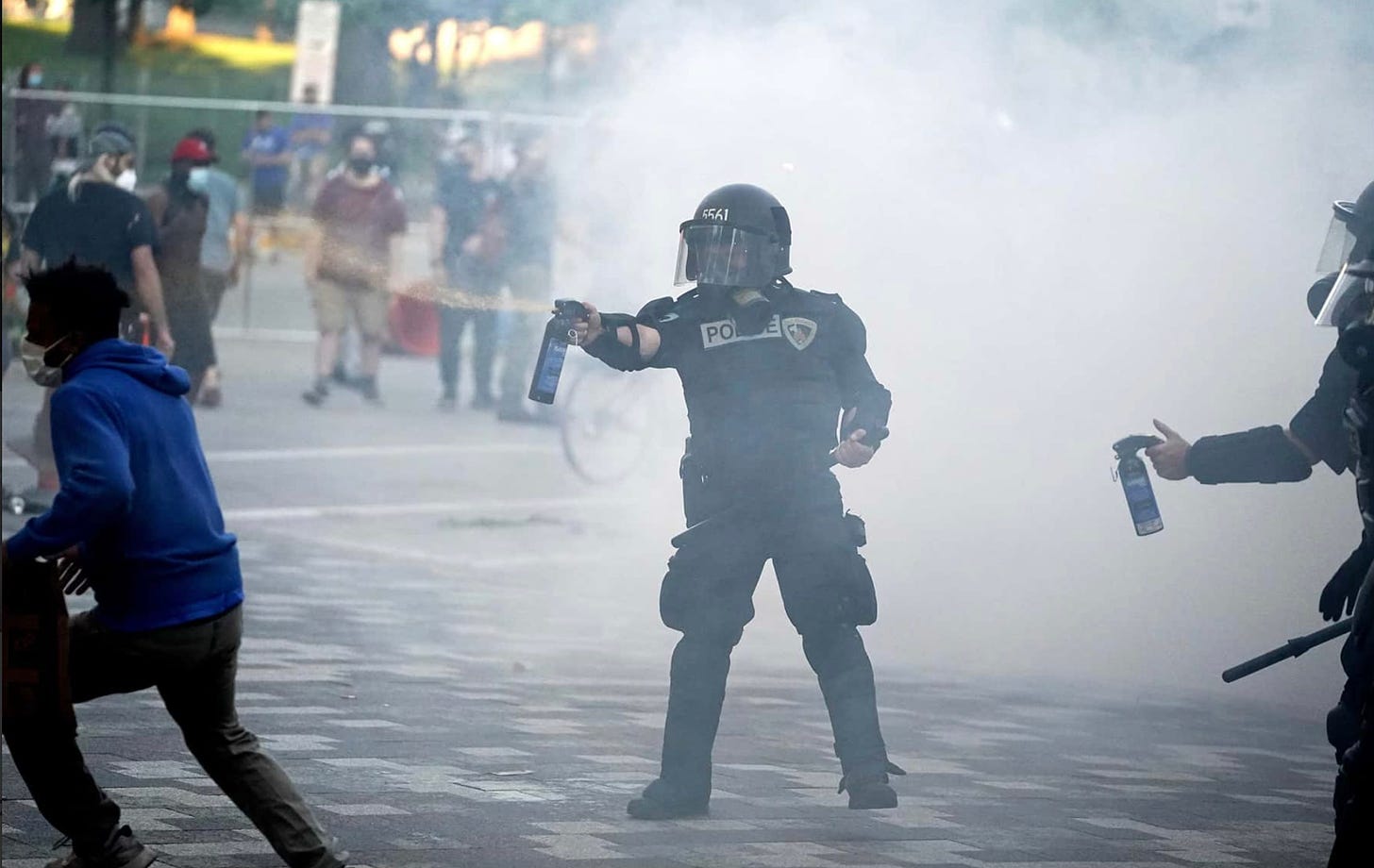
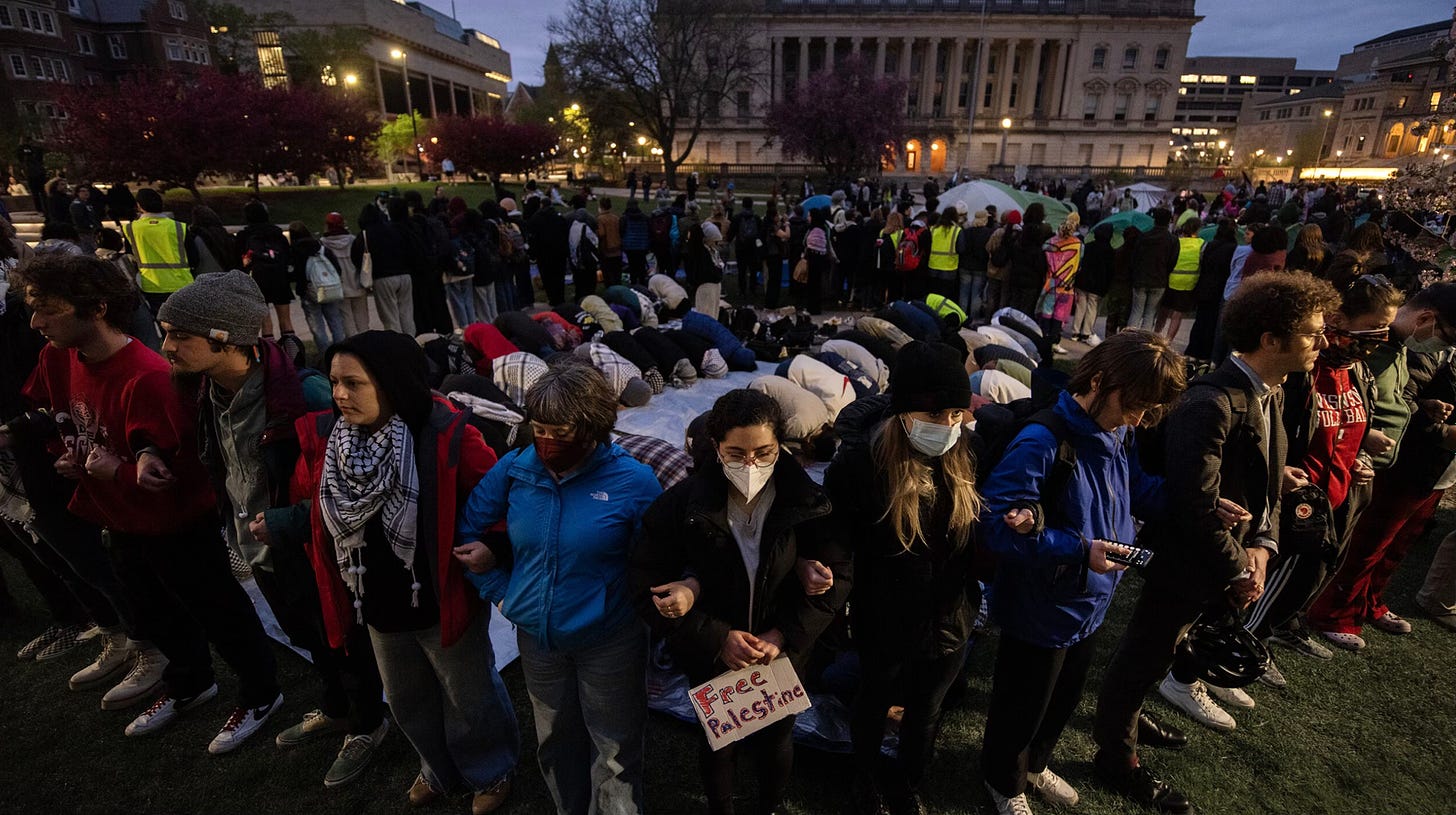
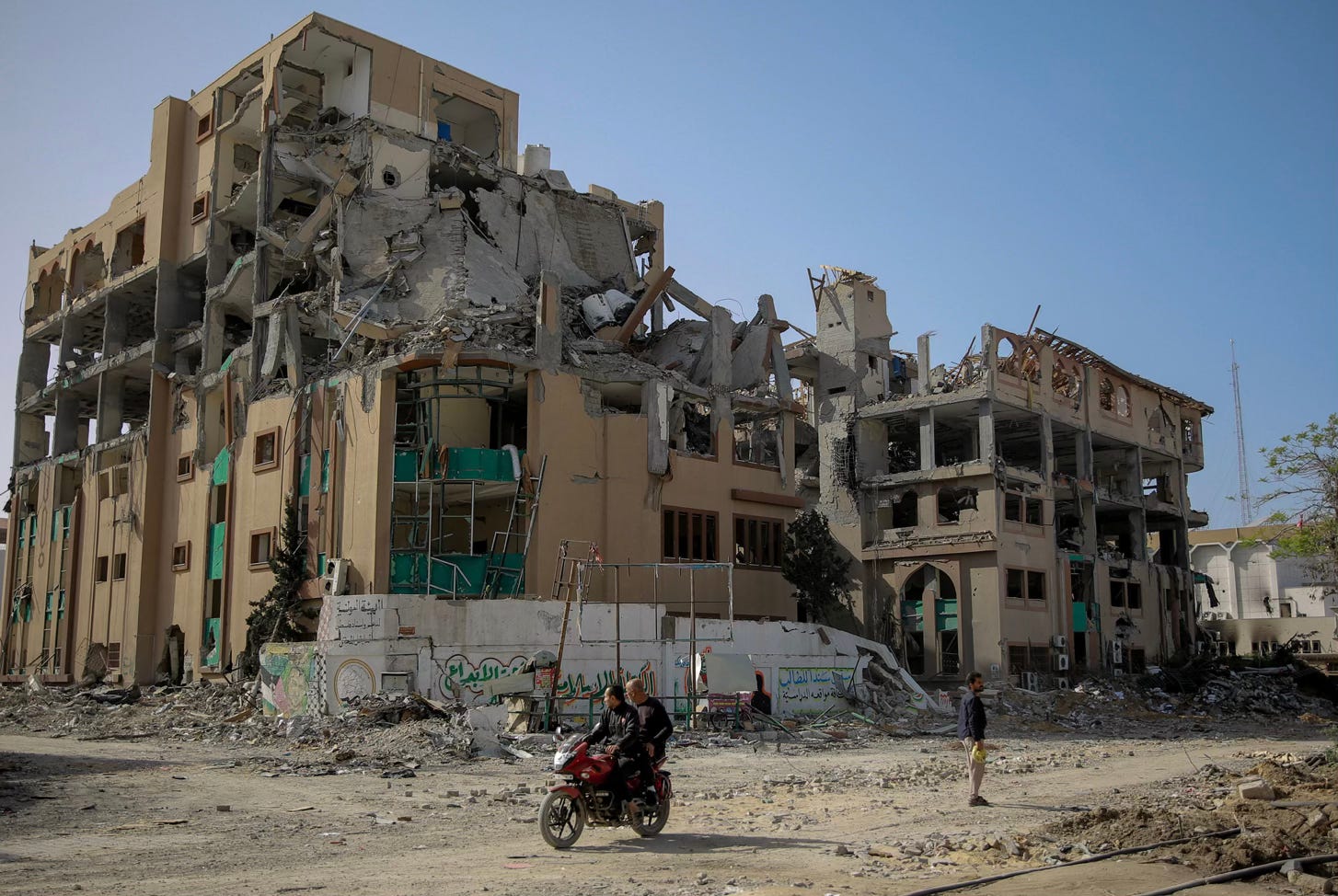
Excellent report! About time someone called this hypocrisy out. Thank you.
"College kids are supposed to be dumb and drunk. They aren’t supposed to ask why imperial wars are being fought in our name, why some people are bombed or shot in order to protect other people’s ostensible safety."
Thank you, Garrett, for taking the time and effort to locate those images and to piece together the reality of cops and campuses. I'm wearing my NO MORE POLICE shirt today and am thinking it's gonna be heavy in the rotation for the near future. :(